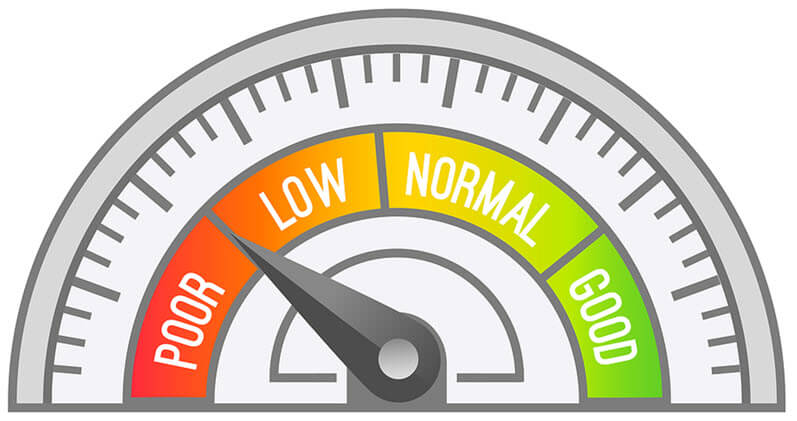
If you'd prefer to watch this on YouTube, click here.
Yes, a slow-loading website can hurt your business.
So, how does your website stack up? Is it fast enough to meet today’s standards, or are potential clients leaving before they even see your offer?
In this post, I'll cover how to determine if your website is slow and what steps to take if it needs a speed boost.
You’ll learn:
Why Website Speed Matters
We’ve all heard the story of the tortoise and the hare, where slow and steady wins the race. But in the digital world, the tortoise doesn’t stand a chance.
Speed is everything online. We all know the frustration of waiting for a slow website to load, and your visitors feel the same way. Research shows that 53% of mobile users will abandon a site if it takes longer than three seconds to load, and 88% of users are less likely to return after a poor experience.
A slow website isn’t just frustrating — it can drive away potential clients and damage your brand.
Let’s start by running a few tests to determine your website’s speed ...
Test Your Website’s Speed with These Tools
There are a couple of free tools you can use to evaluate your website’s speed:
- 1Google PageSpeed Insights: Visit pagespeed.web.dev, paste your website URL, and click “Analyze.” In about 30 seconds, you’ll get scores for both the mobile and desktop versions of your site, along with details on factors that might be slowing it down.
- 2GTmetrix: Head over to gtmetrix.com, paste your URL, and hit “Analyze.” GTmetrix provides detailed performance insights. NOTE: GTmetrix only offers desktop results for free. Mobile results require a paid subscription.
I recommend starting with Google PageSpeed Insights because it provides excellent insights for both mobile and desktop, which is essential in today’s mobile-driven world.
My Recommended Speed Benchmarks to Aim For
- Desktop: Aim for a score in the 80s or 90s.
- Mobile: A score in the 60-80 range is generally acceptable.
If your scores are in the 20s, 30s, or 40s, on either desktop or mobile, you likely have some work to do to speed up your site.
Top Reasons for a Slow Website (And How to Fix Them)
Here are the 3 most common reasons for slow load times and the best ways to address them.
1. Large, High-Resolution Images
One of the biggest culprits behind a slow site is oversized images. High-resolution images straight from a camera or stock photo site are often WAY too large for websites. These images, sometimes ranging from 2,000-4,000 pixels and multiple megabytes in size, can take a long time for your browser to download and resize.
Solution: Pre-process images with three simple steps:
- Crop: Trim out any unnecessary parts of the image.
- Resize: Adjust the dimensions to fit the area on your website. For example, if an area needs a 640x360 image, resize the high-res version accordingly.
- Compress: Remove excess data without losing quality. Use a WordPress plugin like Imagify or an online tool like Tinyify (my preferred method).
These steps can reduce image file sizes by up to 95%, greatly improving load times.
If you need more guidance, check out my detailed guide on pre-processing images here.
2. Outdated or Excessive Plugins
Running too many plugins can drag down your site’s speed, especially if they’re outdated or poorly coded. Every plugin adds to the workload of your site’s backend, so it’s essential to streamline and optimize.
Solution: Remove any plugins you aren’t actively using. Regularly update the ones you keep and consider consolidating functionalities with multipurpose plugins.
Also, review your website theme. An outdated or cluttered theme with unnecessary features can slow down your site. If your website was built several years ago, it may be time for an upgrade to keep up with modern design and speed standards.
3. Overly Complex Page Designs
Heavy animations, large background videos, and intricate page layouts with multiple layers and blocks can slow down your website. The more elements your site has to load, the longer it takes to render.
Solution: Simplify your design and consider using a caching plugin. My go-to caching plugin is WP Rocket, which creates static versions of your pages, significantly reducing load times.
Conclusion
Website speed is crucial not only for user experience but also for your business’s overall success. A slow website can drive away potential clients before they even see what you have to offer, impacting both your reputation and conversion rates.
By improving your website’s speed, you’re setting up a smoother experience for visitors and making a positive impression on potential clients.
Remember, a fast-loading, streamlined site is a small investment that can yield big returns in client retention and satisfaction.
